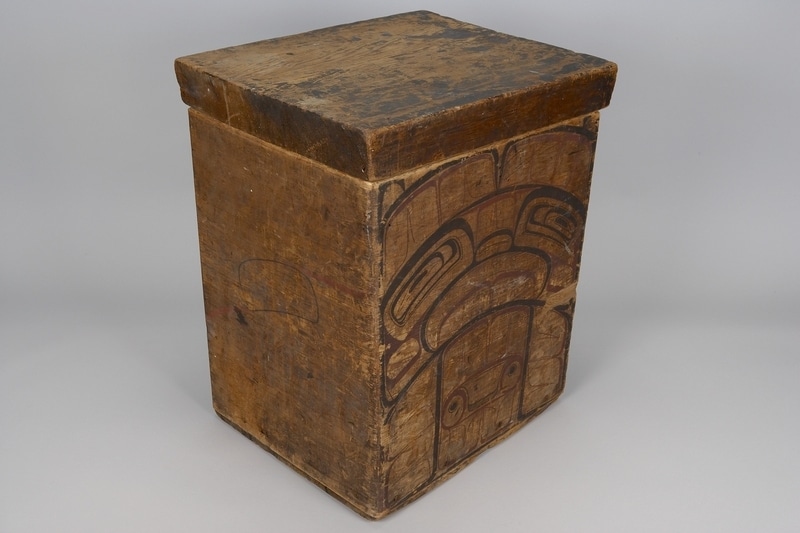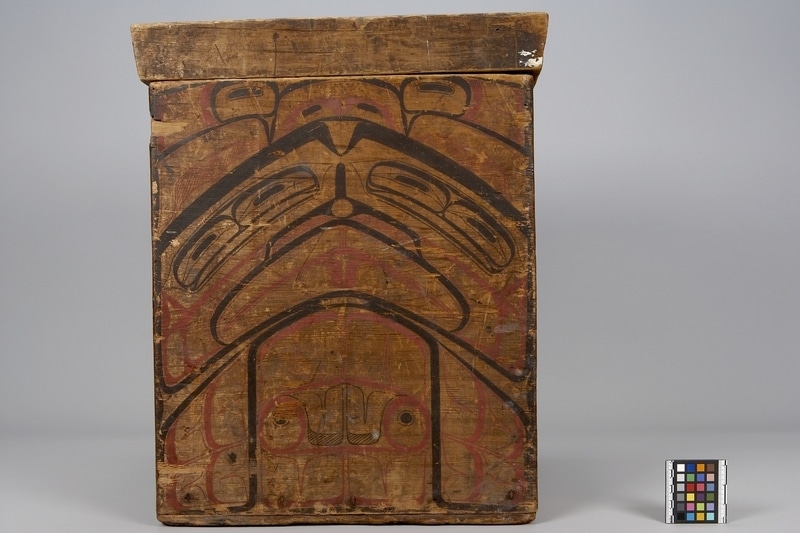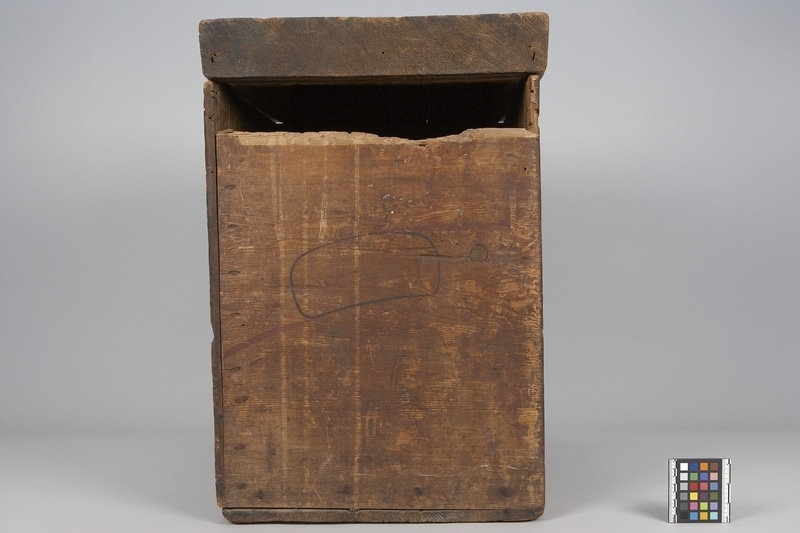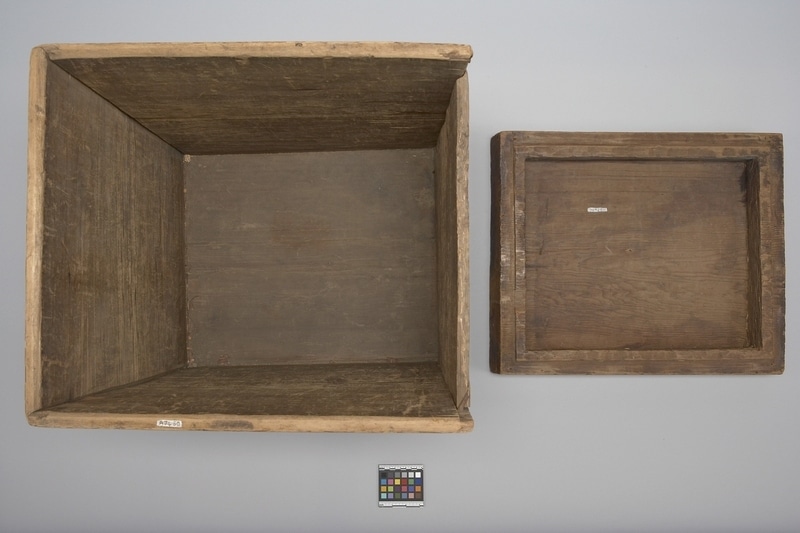Bentwood Box Item Number: A7450 a-b from the MOA: University of British Columbia




Description
Tall square bentwood box (part a) with a slightly flared lid (part b). The front and back are painted red and black in different Northwest Coast stylized distributive designs. The front and back have complex designs. The side panels are painted with a black ovoid with a red line attached at the top right and bottom left corners. Box is adzed, kerfed, steamed, bent, last corner pegged, bottom pegged and nailed. The lid has traces of black paint and made of a single piece of wood.
History Of Use
Bentwood boxes were used primarily for storage of food, implements, and ceremonial regalia, but were also used for cooking and serving food. They were trade goods or gifts, and were symbols of wealth and prestige. Boxes used for ceremonial purposes were usually more highly decorated than those for utilitarian use.
Specific Techniques
Bentwood, or kerfed-corner, containers are constructed by a process unique to the Northwest Coast Aboriginal peoples. The carver begins with a single straight-grained plank of red cedar, or sometimes yellow cedar, spruce, or yew. The surface of the plank is finished with chisels, adzes, and knives; in earlier times, it was smoothed further with sandstone or dried sharkskin. Then three parallel kerfs, or grooves, are carved out at measured points across the width of the board, at right angles to the long edge. The kerfs, which will become three corners of the box, allow the board to be steamed until the wood fibres are softened, and then carefully bent to form a box with symmetrical sides. The final corner, as well as a fitted base, are joined and fastened with pegs (through drilled holes) or laced with spruce root or twisted cedar withes (branches). Storage boxes also have fitted lids of cedar, hollowed from the inside. Finally, painted compositions may be applied to the completed box and shallow carving added to bring the forms into relief. A well-made bentwood box is watertight. Historically, most boxes were used to store preserved foods and material goods; plain cooking boxes could be used to steam or boil food by adding water and heated stones.
Narrative
Heitsuk style bentwood box. A. D. MacFarlane (previous owner) was the housekeeper for the first B.C. Gold Commissioner (Prince Rupert c. 1900). She acquired some of the objects the Commissioner had collected. This box is listed as Tsimshian because it was said to be collected in Prince Rupert, but it may have been made by a Heiltsuk artist, based on the painted design.
Item History
- Made in British Columbia, Canada between 1850 and 1900
- Collected in Prince Rupert, British Columbia, Canada before 1900
- Owned by A. D. MacFarlane
- Owned by Edward F. Meade before May 1961
- Received from H. R. MacMillan (Funding source) and Edward F. Meade (Seller) during May 1961
What
Who
- Culture
- Tsimshian ?
- Previous Owner
- A. D. MacFarlane and Edward F. Meade
- Received from
- H. R. MacMillan (Funding source) and Edward F. Meade (Seller)
Where
- Holding Institution
- MOA: University of British Columbia
- Made in
- British Columbia, Canada
- Collected in
- Prince Rupert, British Columbia, Canada
When
- Creation Date
- between 1850 and 1900
- Collection Date
- before 1900
- Ownership Date
- before May 1961
- Acquisition Date
- during May 1961
Other
- Condition
- fair
- Accession Number
- 0050/0003 a-b